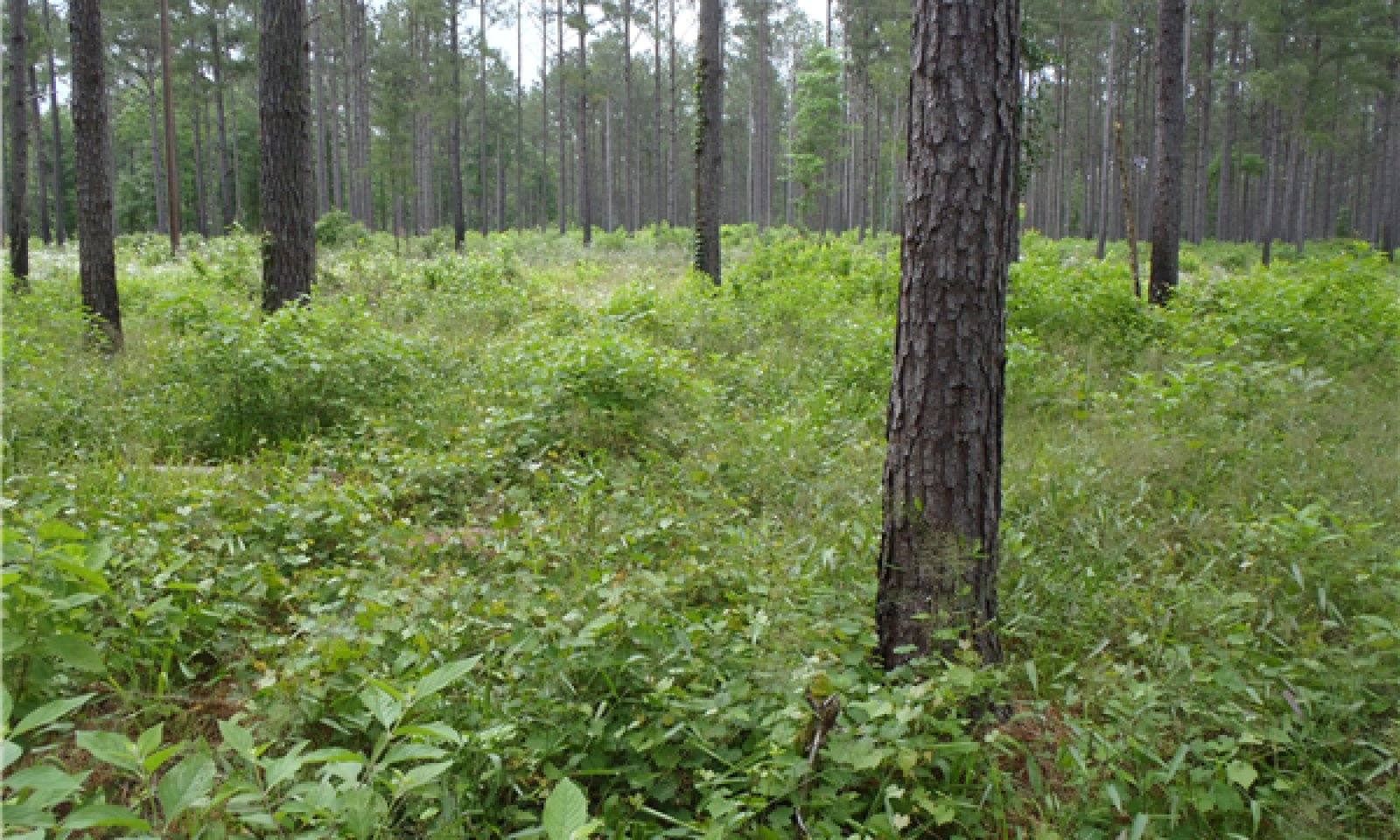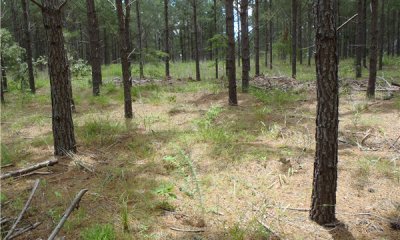
Loamy Upland
Scenario model
Current ecosystem state
Select a state
Management practices/drivers
Select a transition or restoration pathway
-
Transition T1A
Fire suppression, no management
More details -
Transition T1B
Clearcut, site preparation, tree planting
More details -
Transition T1C
Clearcut, grass/crop planting
More details -
Restoration pathway R2A
Selective timber harvest, prescribed burns
More details -
Transition T2A
Fire suppression, no management
More details -
Transition T2B
Clearcut, site preparation, tree planting
More details -
Transition T2C
Clearcut, grass/crop planting
More details -
Restoration pathway R3A
Selective timber harvest, mid-story shrub control, prescribed burns
More details -
Transition T3A
Clearcut, site preparation, tree planting
More details -
Transition T3B
Clearcut, grass/crop planting
More details -
Restoration pathway R4A
Gap-phase regeneration or clearcut with tree planting
More details -
Transition T4A
Fire suppression, no management
More details -
Transition T4B
Clearcut, grass/crop planting
More details -
Restoration pathway R5A
Tree planting, mid-story shrub control, prescribed burns
More details -
Transition T5A
Clearcut, site preparation, tree planting
More details -
No transition or restoration pathway between the selected states has been described
Target ecosystem state
Select a state
Description
There are two communities in the Woodland State: Shortleaf Pine/Red Oak Woodland Community (1.1) and the Fire-primed Understory Community (1.2). State 1 has a moderate overstory cover (65 to 85 percent) of primarily shortleaf pine and red oak. The understory is heavily vegetated with grasses, forbs, and shrubs. In large part to the overall productivity of the site, high levels of biomass exist and very little bare ground. Plants grow quickly and search to colonize every useable space.
Natural disturbances of fires, lightning strikes, hurricanes (wind throw), ice events (rare), and beetle infestations aid in maintaining the uneven-age structure. Understory saplings are constantly growing and trying to occupy space, but the natural canopy spacing is kept intact by periodic fires ranging from 3 to 5 years. Representative basal areas range from 80 to 120 square feet per acre. The basal area and canopy cover generally increase at a parallel rate.
Submodel
Description
One community exists in the Mixed Mid-story (2) State: the Mixed Mid-story Community (2.1). This community represents a transitioning state between the historical climax community (State 1) and the steady-state of the Mixed Forest (State 3). Without fire or management, the understory is quickly overtaken by shrubs and saplings which shade out grasses and forbs. The site begins to lose diversity amongst vegetative types.
Submodel
Description
There are two communities in the Mixed Forest State: the Mixed Forest Community (3.1) and the No Overstory Community (3.2). The Mixed Forest community represents a steady-state for the Loamy Uplands. Without fire or management, the site begins to lose the vegetative indicators that make the ecological site unique. The plant communities will stay constant without disturbance or intervention.
Submodel
Description
The Plantation State is a result of conversion activities. The landowner has maximized silviculture production by planting a monoculture of tree species.
Submodel
Mechanism
The transition from State 1 to State 2 is a result of time and long periods (greater than 5 years) of no fire and/or forest management practices. Without fire to suppress tree seedlings, biomass and diversity is lost from the grass and forb layers of the system.
Mechanism
The transition is due to the land manager maximizing silviculture potential. Merchantable timber is harvested by clearcut, then the site is prepared and planted to a monoculture of trees.
Mechanism
The transition is due to the land manager maximizing agricultural production. Merchantable timber is harvested by clearcut, then the site is prepared and planted to either an improved grass or row crops.
Mechanism
The driver for restoration is fire and understory shrub and tree suppression. Enough fuel is still left in this community to carry a fire through the site. More frequent burns (1 to 2 years) may be required to suppress the woody vegetation. Timber stand improvement practices should be used on undesirables and some species may have escaped the effective fire height and will have to be selectively cut down to return to the reference state.
Mechanism
The transition from a Mixed Mid-story (State 2) to the Mixed Forest (State 3) is a result of time and long periods (greater than 20 years) of no fire and/or no forest management. Without fire to suppress fire intolerant trees, they become part of the overstory canopy. The overstory is so saturated that the understory herbaceous layer is almost non-existent. As the overstory canopy closes, the under and mid-story are occupied only by shade tolerant species.
Mechanism
The transition is due to the land manager maximizing silviculture potential. Merchantable timber is harvested by clearcut, then the site is prepared and planted to a monoculture of trees.
Mechanism
The transition is due to the land manager maximizing agricultural production. Merchantable timber is harvested by clearcut, then the site is prepared and planted to either an improved grass or row crops.
Mechanism
Restoration of this community to the reference state begins with a selective timber harvest. Removing unwanted trees opens up the canopy, allowing sunlight penetration to the ground. Years of overstory growth have limited the fuel necessary to have an effective fire. Time will be needed to encourage understory growth. Once the herbaceous layer has established, more frequent than natural burns (1 to 3 years) may be required to suppress the woody vegetation.
Mechanism
The transition is due to the land manager maximizing silviculture potential. Merchantable timber is harvested by clearcut, then the site is prepared and planted to a monoculture of pine trees.
Mechanism
The transition is due to the land manager maximizing agricultural production. Merchantable timber is harvested by clearcut, then the site is prepared and planted to either an improved grass or row crops.
Mechanism
This restoration pathway can be accomplished in different ways depending on goals. One option is to create canopy openings by reducing the number of overstory trees. Then, restore the resulting canopy gaps with species from the reference state’s (State 1) understory. Restoring the understory may include planting shortleaf pine and oak species found in the reference state. This method keeps the woodland structure intact and slowly changes the species composition.
Mechanism
This community transition is caused by neglecting the plantation understory. Without fire, mowing, or herbicides, unwanted understory saplings can begin to grow into the overstory.
Mechanism
The transition is due to the land manager maximizing agricultural production. Merchantable timber is harvested by clearcut, then the site is prepared and planted to either an improved grass or row crops.
Mechanism
This restoration path can be accomplished by planting a mix of oak and pine species to their natural frequencies (see State 1 – Overstory Composition table), trying to attain a 65 to 85 percent mature overstory canopy. Management will be required to control unwanted species by burning, mowing, and/or herbicides. Controlling introduced pasture grasses is difficult, with complete control likely not attainable. The herbaceous understory will take time to develop, but this process can be expedited if adapted plant material seed is available.
Model keys
Briefcase
Add ecological sites and Major Land Resource Areas to your briefcase by clicking on the briefcase (![]() ) icon wherever it occurs. Drag and drop items to reorder. Cookies are used to store briefcase items between browsing sessions. Because of this, the number of items that can be added to your briefcase is limited, and briefcase items added on one device and browser cannot be accessed from another device or browser. Users who do not wish to place cookies on their devices should not use the briefcase tool. Briefcase cookies serve no other purpose than described here and are deleted whenever browsing history is cleared.
) icon wherever it occurs. Drag and drop items to reorder. Cookies are used to store briefcase items between browsing sessions. Because of this, the number of items that can be added to your briefcase is limited, and briefcase items added on one device and browser cannot be accessed from another device or browser. Users who do not wish to place cookies on their devices should not use the briefcase tool. Briefcase cookies serve no other purpose than described here and are deleted whenever browsing history is cleared.
Ecological sites
Major Land Resource Areas
The Ecosystem Dynamics Interpretive Tool is an information system framework developed by the USDA-ARS Jornada Experimental Range, USDA Natural Resources Conservation Service, and New Mexico State University.












